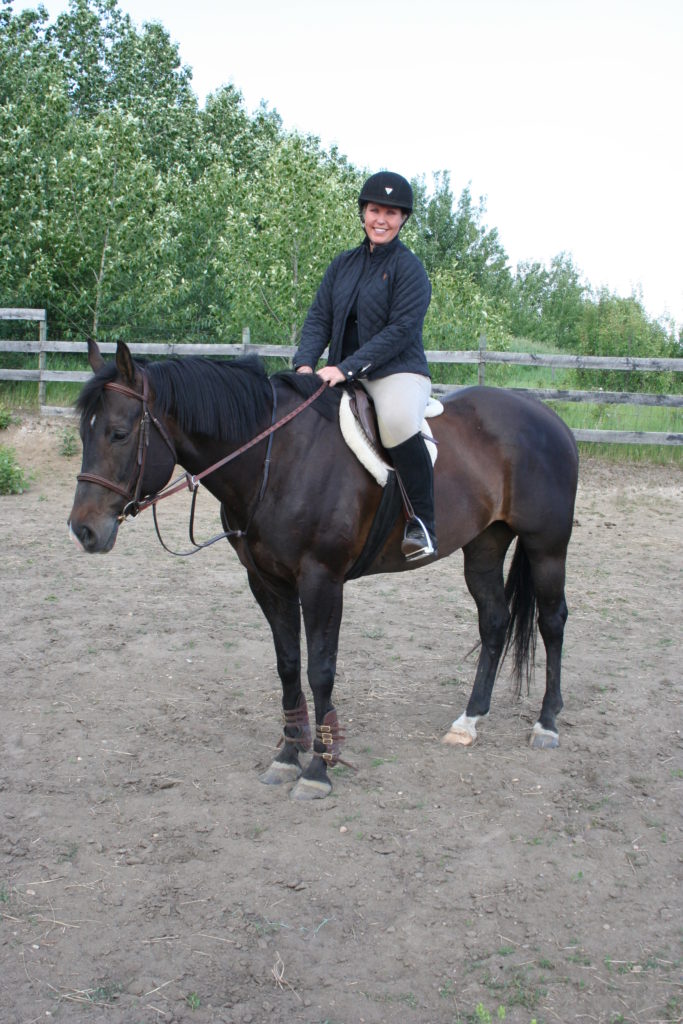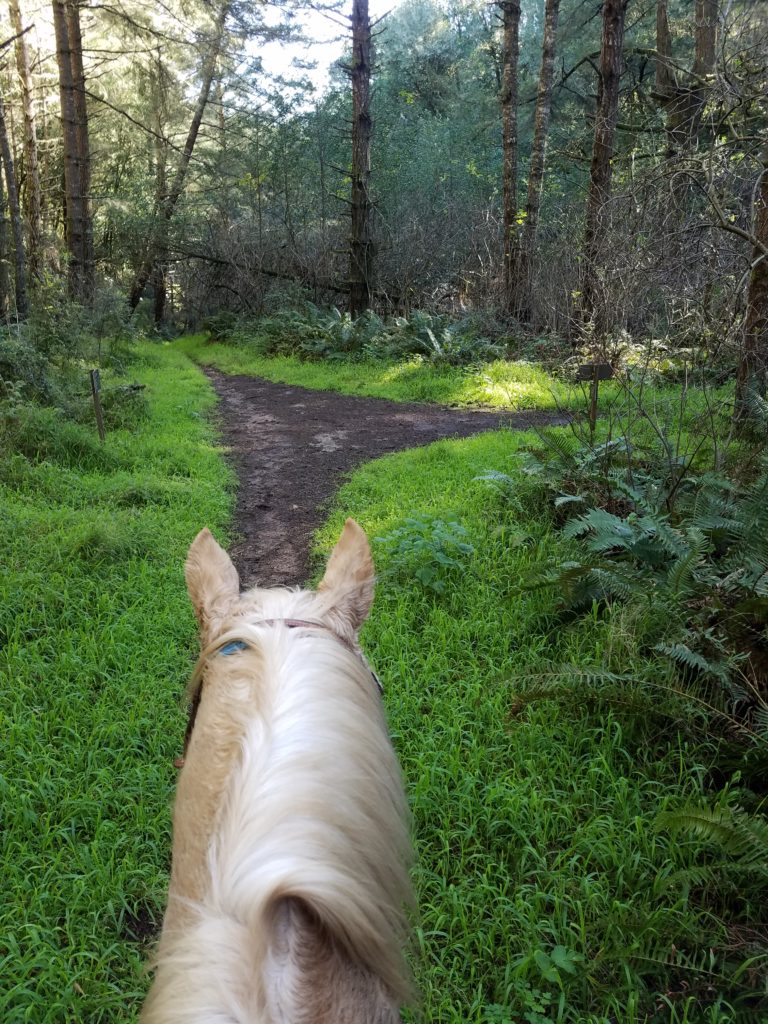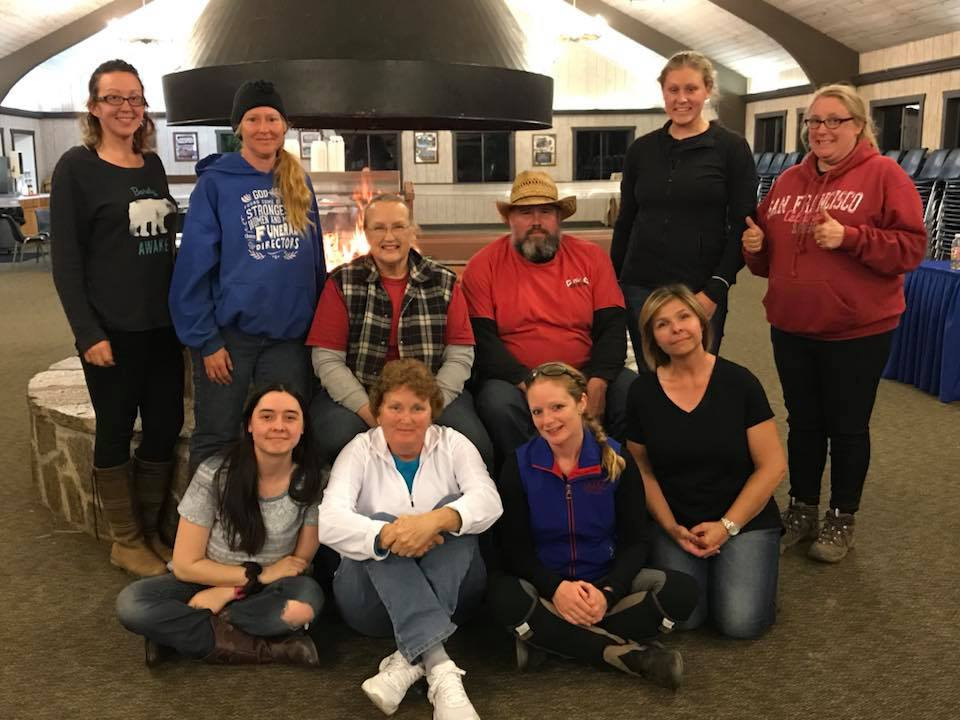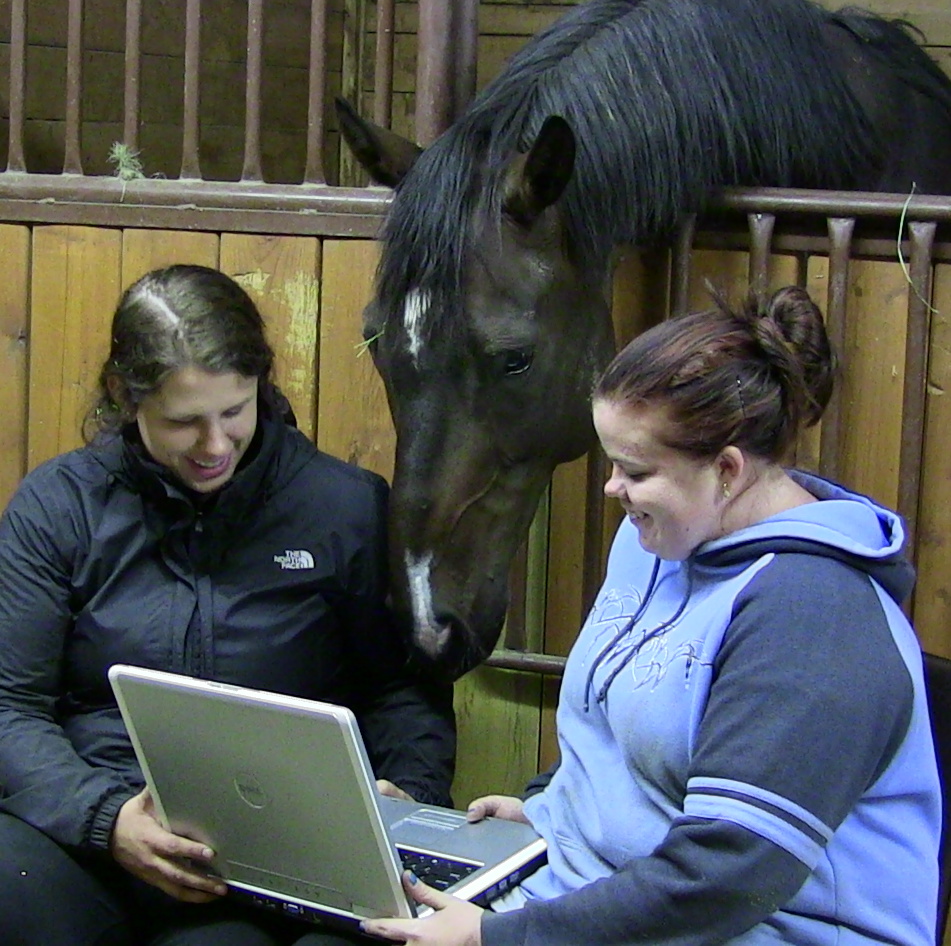Secrets of Successful Riding Instructors
By Sarah Evers Conrad
When riders are asked why they ride, it often comes down to one prevailing answer—passion for the horse. And it also explains why so many riders become riding instructors. It’s important for riding instructors to have that passion for horses and teaching. Riding lessons are often the stepping stone into the horse industry for many participants, which makes horseback riding instructors the lifeblood behind a thriving equine industry. Therefore, it’s crucial for instructors to be able to have successful careers so that there is growth and sustainability within the horse industry as a whole.
Three of CHA’s experts, all who have had successful careers as riding instructors and who have given back to the industry as CHA board members and volunteers, share some of the secrets behind their success.
Various Avenues to Success
CHA Master Instructor and Clinician Tara Gamble of British Columbia, Canada, went out on her own with Tara Gamble Horsemanship in 2009 after working at a variety of facilities. Gamble got her start teaching at age 18 at Birch Bay Ranch in Alberta after 10 years of being a camper. She says she wanted to give back to the ranch that had been such a big part of her life. Gamble was introduced to CHA early in her career because the ranch required CHA certification.
Gamble’s excitement for running the games station at Birch Bay Ranch led her to to one of the most important decisions of her life. “It was at this moment I realized this was my passion, and I was going to become a horsemanship instructor,” she says.
Not only has she been an instructor at a variety of facilities, the past 27 years have seen Gamble serve as CHA President, as Vice President of the Miss Rodeo Canada Board of Directors and a pageant coordinator, as President of the Alberta Equestrian Federation (AEF), and as an American Quarter Horse Association (AQHA) board member. She also became an AQHA Professional Horseman. CHA has recognized Gamble’s dedication by naming her the 2013 CHA Volunteer of the Year and the 2006 CHA Clinic Instructor of the Year.
Peggy Adams of Greensboro, GA, retired a few years ago from teaching on her farm, PLA HorsePlay. Adams is the current CHA Past President, a CHA Master Instructor, Clinic Staff, and a Certified Overnight Trail Guide. She spent almost 30 years with the Girl Scouts outside of the Atlanta area in a variety of managerial positions, including as the supervisor of the year-round outdoor programs for youth and adults. Because one of the most popular activities for the Girl Scouts was horseback riding, Adams was charged with designing and developing the riding lesson program at three equine facilities.
“Having been a horse enthusiast my entire life, it became my mission to help make sure that campers had an opportunity to be introduced to horses,” says Adams. “Many of our young riders wouldn’t have ever had the chance to ride if not for our programs. It was a wonderful way to take my passion for horses and share it with others.”
Due to her lifetime achievements and her dedication to CHA since 1996, Adams was named the 2016 CHA Distinguished Service Award winner.
Anne Brzezicki, CHA’s Vice President of Regional Relations, is most known for her work as the Director of the Equestrian Program at Middle Tennessee State University (MTSU) and coach of the MTSU Intercollegiate Horse Show Association (IHSA) teams. She also taught at the University of Connecticut and Virginia Tech, worked for AQHA Professional Andy Moorman, and ran her own business in Tennessee, which was focused on amateurs and youth inside and outside the show arena.
Brzezicki’s first horseback riding teaching position was at the Connecticut 4-H Camps, where she worked with 500 riders every summer for seven years. She says her career chose her. “It was there that I discovered my passion for teaching riders to get the best from their horses rather than to simply look good,” she says.
Due to a hiring freeze, she and another student were allowed to coach her university’s equestrian team when she was a student at the University of Connecticut (UConn). Due to that experience, she was hired to teach at UConn before she got out the door. That position led to her other teaching positions and a lifetime of dedication to college students in equestrian programs.
She is a now a CHA Master Instructor and an Assistant Clinic Instructor, and the 2015 CHA Instructor of the Year. For all of her contributions to IHSA, the organization awarded her with the 2003 IHSA Lifetime Achievement Award. She retired from MTSU last year.
Reflecting on Success
Gamble points out is that the diversity within her career has helped her enjoy a variety of experiences and continuously offers up brand new opportunities. While she gained a lot of experience subcontracting at different barns for lessons for 17 years, transitioning to her own facility was a new challenge that required business, management, and public relations skills in addition to her horsemanship knowledge and experience.
“Going the private route allowed me more control over my client’s and their horse’s needs to increase their satisfaction,” says Gamble, adding that great communication skills, people skills, and organizational skills have been important. She encourages instructors to always keep learning and adding to their experience.
Adams recommends that instructors learn to communicate with students as easily as possible. “This requires the ability to break skills down into easily understandable small steps,” she adds. “Being able to teach with a rider’s learning style in mind goes a long way to achieving success.”
Brzezicki advises instructors to teach respect for the horse and to share their enthusiasm with their students. “Pay attention to what works for your students and what doesn’t, and change what doesn’t,” she adds. “Take advantage of every opportunity to teach and to watch and listen to other teachers. And understand that your students will also teach you every day.”
Common Problems
Some of the common problems that instructors experience include: miscommunications with students, burnout, lack of self care, how to keep up with progress within a discipline, and dealing with fads, and barn drama.
“Keeping a positive attitude through adversity is paramount,” says Gamble. “It’s important to keep a direct, clear line open and check in often with your students/clients. Try to be as proactive as possible and think of potential challenges.”
Marketing Tips
Marketing is an important aspect of running any business. Gamble recommends that instructors become involved in the local horse community and network as much as possible. “I recommend remembering that you are always an ambassador, and your actions are a reflection of your reputation,” she says.
Adams reminds instructors to tell others about their CHA certification and to use this credential in their marketing.
Word-of-mouth recommendations are key for riding instructors to market themselves. People will often market a business that they can stand behind. “Students and customers having a good time with their horses, supporting each other and winning, draws others to your program and makes the best advertising,” says Brzezicki.
Additional methods of marketing that have also been beneficial to Gamble, Adams, and Brzezicki are:
- Hosting their own websites;
- Participating on social media platforms;
- Hosting free or low-cost clinics for local 4-H or saddle club kids; and
- Helping state organizations with their novice programs.
The CHA Impact
Adams shares that she used the CHA standards to design the programs and facilities for the Girl Scouts. “These industry standards were very useful in helping others understand why we did things a certain way,” says Adams, who adds that both parents and students appreciated that she had the CHA Certification to back up her experience.
“CHA offered me the tools to develop a riding program focusing on safety and progressive skill development for my students,” says Gamble, who has been certified with CHA for 27 years.
Even though she found CHA late in her career, Brzezicki says CHA’s teachings validated what she had been doing in her career and gave her more confidence to help her students who wanted to become riding instructors. It also broadened her network.
“I have found CHA to be the most inclusive, accepting, creative, and helpful set of horse people all dedicated to the progress of their students and other instructors,” adds Brzezicki.
Gamble encourages instructors to familiarize themselves with all of the information, resources, and opportunities on the CHA websites, www.CHA.horse and www.CHA.horse. In addition, many CHA regions have their own websites or social media platforms with additional information. One important resource offered by CHA is the ability for instructors to advertise their businesses on the CHA instructor database.
Additional member benefits that Gamble, Adams, and Brzezicki have found valuable include the insurance discounts, this magazine – The Instructor, the ability to participate at regional and international conferences, corporate partner benefits, products on the CHA online store, and educational materials, such as manuals and DVDs.
“Use the CHA student books and materials with your riders,” suggests Adams. “Have students and parents watch some of the video shorts on the CHA YouTube channel to reinforce topics taught during lessons.”
In Summary
Adams emphasizes the importance of continuing education and certification for today’s instructors. “My advice is to keep learning and challenging yourself to become certified as an instructor,” she says. “This will allow you to see how you stack up with other instructors by having a third-party evaluation of your current teaching skills.”
Brzezicki says that CHA certification is a great resume builder, especially since many employers are looking for certification as a sign that someone has been tested and found to be competent. She says it’s important for instructors to challenge themselves to always work toward higher levels of certification.
Adams recommends instructors serve as mentors to less experienced instructors in order to help the horse industry as a whole. Gamble and Brzezicki remind instructors that it takes time for success to happen.
“This is hard work,” says Brzezicki. “Approach each lesson with positive energy, a plan, and a goal. Look at each student with hope. And if you don’t love it, find another job.”
Gamble sums it up with the why behind why she teaches. “The rewards of teaching are much greater than monetary and have enriched my life immensely,” she says.
Sarah Evers Conrad is the editor of CHA’s The Instructor, and is also published in a variety of equine publications, such as The Horse, Arabian Horse Life, American Quarter Horse Journal, American Paint Horse Journal, USDF Connection, Equestrian, and others. In addition, she helps equine businesses with their marketing through her company, All In Stride Marketing. Visit AllInStrideMarketing.com.
“Being able to teach with a rider’s learning style in mind goes a long way to achieving success.” – Peggy Adams





